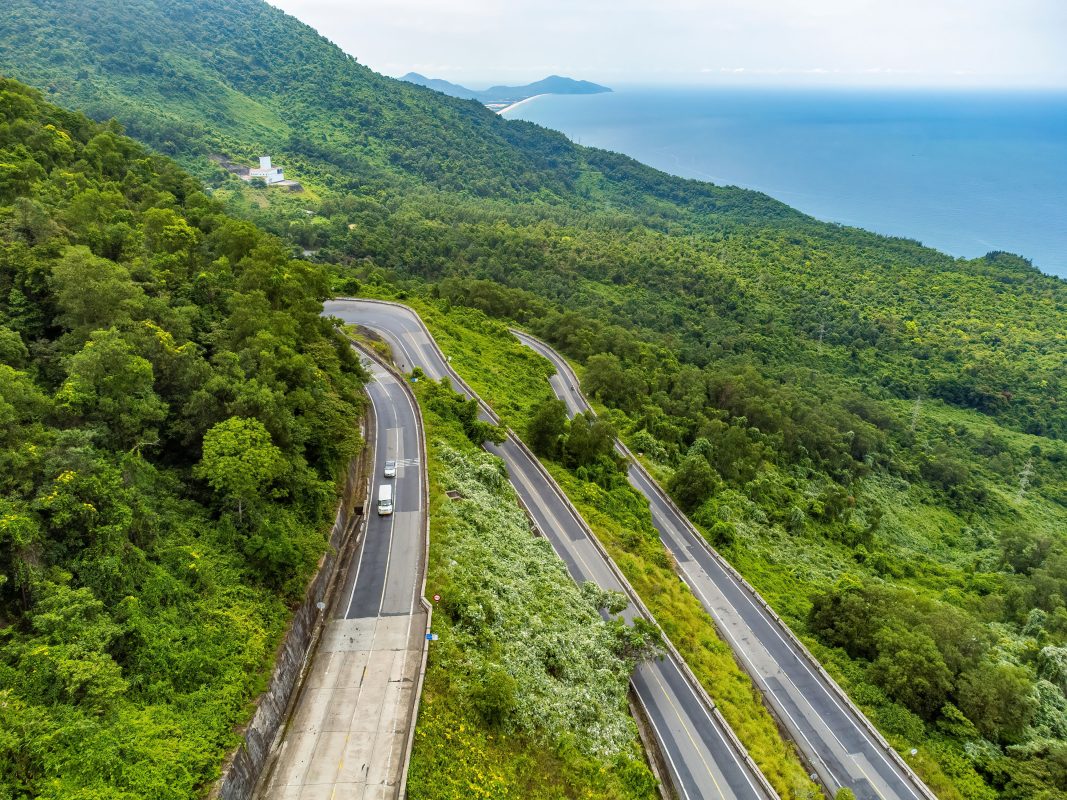Hue to Hoi An: Complete Guide to Train, Bus, and Private Car Travel
Traveling from Hue to Hoi An is one of the most popular routes in Central Vietnam, connecting two UNESCO World Heritage Sites. Whether you’re a budget backpacker or luxury traveler, choosing the right transportation method can make or break your journey. Let’s dive into the most comprehensive guide you’ll find for this scenic 122-kilometer route.
Why This Route Matters for Your Vietnam Adventure
The journey between these two historic cities isn’t just about getting from point A to B – it’s an experience in itself. You’ll pass through the stunning Hai Van Pass, witness breathtaking coastal views, and transition from Vietnam’s former imperial capital to its most charming ancient town.

Hue and Hoi An are located about 150 km apart and can be easily reached by many different means of transport such as motorbike, bus, or private car. There are also many sights and activities to enjoy along the way, such as the stunning Hai Van Pass, the Marble Mountains, and the beaches of Da Nang. From Hue to Hoi An is an ideal road for those who want to explore the most beautiful things of Central Vietnam.
Quick Comparison: Which Transportation Method Suits You?
| Transport Mode | Duration | Cost (USD) | Comfort Level | Best For |
|---|---|---|---|---|
| Train | 2.5-4 hours | $3-25 | Moderate | Budget travelers, train enthusiasts |
| Bus | 3-4 hours | $5-15 | Basic to Good | Backpackers, budget-conscious travelers |
| Private Car | 2-3 hours | $60-100 | Excellent | Families, luxury travelers, photographers |
Taking the Train from Hue to Hoi An: A Classic Vietnamese Experience
The Reunification Express (officially the North-South Railway) offers a quintessentially Vietnamese travel experience. Here’s everything you need to know:
Train Schedule and Booking
- Departure times: 6:05 AM, 9:12 AM, 1:10 PM, 5:50 PM, 7:35 PM
- Arrival station: Da Nang (then 45-minute transfer to Hoi An)
- Booking platforms: Baolau, 12Go Asia, or directly at Hue station
“The train journey offers unparalleled coastal views between Lang Co and Da Nang that you simply can’t experience from the highway.” – Experienced traveler’s insight
Train Classes Explained
- Hard Seat: Basic wooden benches, ideal for short journeys
- Soft Seat: Cushioned seats with air conditioning
- Hard Berth: 6-berth compartments (not necessary for this short journey)
- Soft Berth: 4-berth compartments (premium option)
Bus Travel: The Budget-Friendly Option
Buses offer the most direct route to Hoi An, dropping you right in the ancient town without needing a transfer from Da Nang.
Top Bus Companies
- The Sinh Tourist: Most popular with backpackers, reliable schedule
- Hanh Cafe: Competitive prices, comfortable seats
- Queen Cafe: Newer buses, good reviews
Practical Bus Travel Tips
Book your ticket at least one day in advance during peak season (June-August, December-January). Most buses include:
- Free water bottle
- One bathroom stop
- Air conditioning (sometimes too cold – bring a jacket!)
- WiFi (though often unreliable)
Private Car: Maximum Comfort and Flexibility
For those prioritizing comfort and photo opportunities, a private car from Hue to Hoi An offers unmatched advantages.
Why Choose Private Transportation?
- Hai Van Pass experience: Stop for photos at the summit
- Flexible itinerary: Visit Lang Co Beach, Elephant Springs, or Marble Mountains
- Door-to-door service: Direct from your Hue hotel to Hoi An accommodation
- Comfort: Air-conditioned vehicle, no crowding
Booking Your Private Car
Several reputable companies offer this service:
- SAMTOUR VIETNAM: Known for professional drivers and well-maintained vehicles
- Hoi An Express: Specializes in this route with experienced drivers
- Local hotels: Can arrange transfers but often at higher prices
Learn more about private car services in Central Vietnam for detailed pricing and booking information.
The Hai Van Pass: Why It’s Worth the Journey
Regardless of your chosen transport method, the Hai Van Pass (Ocean Cloud Pass) remains a highlight. At 500 meters above sea level, it offers:
- Panoramic views of the East Sea
- Historical French bunkers
- The geographical divide between North and South Vietnam
- Dramatic weather changes (often cloudy at the top, sunny at the bottom)
“The Hai Van Pass isn’t just a mountain pass – it’s where you’ll understand why Top Gear called this one of the world’s best coastal roads.” – Top Gear’s Vietnam Special
Essential Travel Tips for the Hue to Hoi An Route
Best Time to Travel
- February to April: Ideal weather, less crowded
- May to August: Hot but clear skies for photography
- September to January: Possible rain, but fewer tourists
What to Pack
- Motion sickness medication: The mountain roads can be winding
- Light jacket: Air conditioning can be intense
- Camera: For those incredible views
- Snacks and water: Limited stops on some services
Arrival in Hoi An: What to Expect
Once you arrive in Hoi An Ancient Town, you’ll find yourself in one of Vietnam’s most enchanting destinations. The UNESCO World Heritage site offers:
- Over 800 historical buildings
- Famous Japanese Covered Bridge
- Vibrant night markets
- World-class tailoring services
- Delicious local cuisine including Cao Lau and White Rose dumplings
For more ideas, check out our guide on top things to do in Hoi An.
Frequently Asked Questions
Is it better to take the coastal or inland route?
The coastal route via Hai Van Pass offers spectacular views but takes longer. The inland tunnel route is faster but less scenic. Private cars usually take the pass, while buses often use the tunnel.
Can I visit Hue and Hoi An in one day?
While possible, it’s not recommended. Both cities deserve at least 2-3 days each to properly explore their UNESCO World Heritage sites and local culture.
Should I book transportation in advance?
During peak season (June-August, December-January), advance booking is essential. During low season, you can often book the day before, except for private cars which should be reserved 2-3 days ahead.</
Making Your Decision: Which Option Is Right for You?
Choose the train if you:
- Love scenic journeys and don’t mind the Da Nang transfer
- Want to experience authentic Vietnamese train travel
- Are traveling on a budget but want comfort
Choose the bus if you:
- Need the most budget-friendly option
- Want direct service to Hoi An
- Don’t mind less flexibility for stops
Choose a private car if you:
- Want to stop for photos at Hai Van Pass
- Are traveling with family or a group
- Value comfort and flexibility over cost
- Want to add stops like Lang Co Beach or Marble Mountains
Conclusion: Your Journey Awaits
The route from Hue to Hoi An is more than just a transfer – it’s an integral part of your Central Vietnam experience. Whether you choose the nostalgic train journey, economical bus ride, or flexible private car, you’re in for stunning scenery and the transition between two of Vietnam’s most captivating destinations.
Remember, the journey is just as important as the destination. Take your time, enjoy the views, and prepare yourself for the magic that awaits in both cities. Safe travels!
For more travel tips and transportation options throughout Vietnam, visit SAMTOUR VIETNAM or consult resources like Lonely Planet Vietnam for additional planning assistance.




